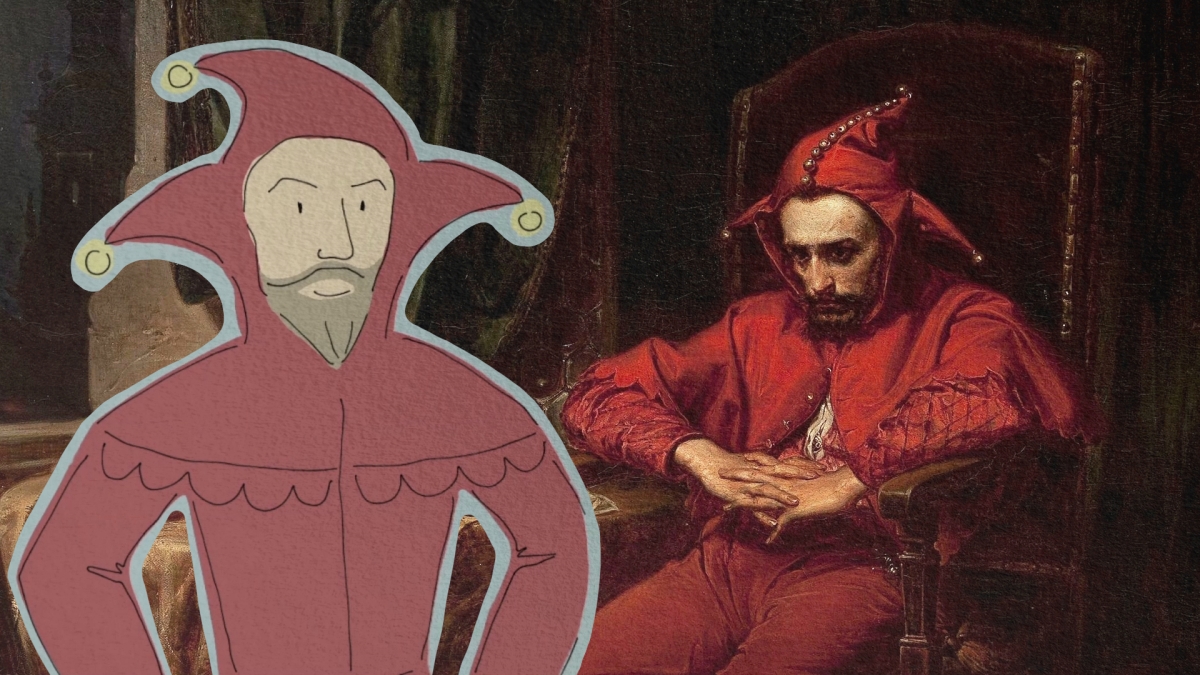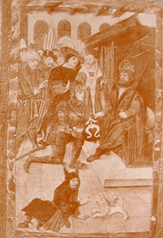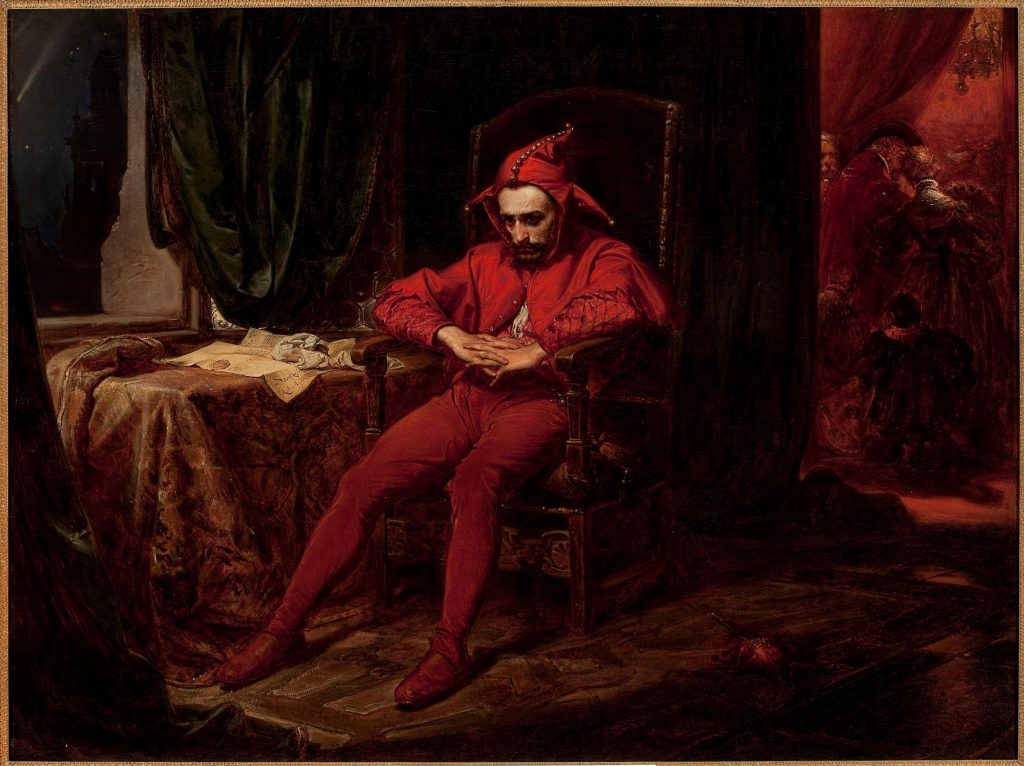Cap and Bells: Jesters and Dwarfs in Vilnius
Court jesters and people charged with entertaining the powerful were popular in many cultures and throughout history. The Grand Duchy of Lithuania was no exception. In the Late Middle Ages and throughout the Early Modern Period the most influential magnates followed the popular European trend of hiring jesters and dwarfs. In doing so they were following the example of the royal court.
From Jagiełło to Vytautas
“
According to the earliest surviving sources dating to the late 14th century, King of Poland and Grand Duke of Lithuania Władysław II Jagiełło, had at least two buffoons named Oleska and Nikolai Tvar, both of Ruthenian descent. Grand Duke Vytautas employed at least one jester, named Pischer. In addition, his court featured several dwarfs and jester Hene, whom the Grandmaster of the Teutonic Order agreed to lend to Vytautas.
According to the earliest surviving sources dating to the late 14th century, King of Poland and Grand Duke of Lithuania Władysław II Jagiełło, had at least two buffoons named Oleska and Nikolai Tvar, both of Ruthenian descent. Grand Duke Vytautas employed at least one jester, named Pischer. In addition, his court featured several dwarfs and jester Hene, whom the Grandmaster of the Teutonic Order agreed to lend to Vytautas. In exchange, Vytautas sent several dwarfs to entertain his court, one of them was Ruthenian that could speak no Lithuanian.
Alexander Jagiellon had four fools among his courtiers. One of them was named Vitoslava, while his dwarf Ignacy Juszkiewicz Kukuszkin hailing from Novhorod-Siverskyi was of noble descent.
Sigismund the Old employed several dozens of jesters coming from various European countries. They read and played music during king’s meals and entertained during celebrations. Some jesters accompanied their master in his travels, while one jester was used to sleeping at the doorstep to the royal bedroom.
The legendary Stanczyk
Stanisław Stanczyk, the court jester to King Sigismund the Old, was so famous that his name eventually became a synonym for a joker. He featured in several books of the 16‒17th centuries, in 1862 Jan Matejko painted his portrait, even his sculpture was erected in Poland!
Do You Know?
Stanczyk even played a joke on the king himself. Once the jester told Sigismund the Old that most people on earth were doctors. Quite understandably, the king expressed doubt. Stanczyk then bandaged his chin and, imitating toothache, walked around the palace wailing; later he took to the streets. Back at the court, he declared to the king: “I was right. Most of them are medics. They all offered advice on how to deal with the toothache.”
Sigismund’s wife Bona Sforza had several female dwarfs. Two of them, Marina and Dorota, enjoyed the queen’s exceptional confidence. She would have them beside her even while discussing confidential matters.
Sigismund Augustus, the son of Sigismund the Old and Bona Sforza, sent a Lithuanian dwarf named Varnas as a present to Holy Roman Emperor Charles V. Despite his physical condition, Varnas is known to have taken part in at least one knight tournament held in Brussels.
No dwarfs? You’re out of trend
“
During the Baroque era demand for various curiosities things, including the human menagerie, grew. Hence it is of no surprise that royal courts of the three Vasa kings employed up to sixteen dwarfs. In addition to entertainment, their primary task, manikins also looked after children, and accompanied their masters in hunting outings. On the whole, the dwarfs were treated as cute pets.
In the wake of the Union of Lublin (1569) dwarfs became very popular in royal courts. King Stephen Báthory employed at least eight of them, including a man named Marcin Żuk whose clever dealings made him the owner of a country estate and several surrounding villages.
During the Baroque era demand for various curiosities things, including the human menagerie, grew. Hence it is of no surprise that royal courts of the three Vasa kings employed up to sixteen dwarfs. In addition to entertainment, their primary task, manikins also looked after children, and accompanied their masters in hunting outings. On the whole, the dwarfs were treated as cute pets.
By the end of the 17th century the demand for jokers and other “curiosities” began to decline. German-born man named Kiyav was perhaps the last known entertainer employed by August III (r. 1733‒1763), while Stanisław August Poniatowski, the last ruler of the Polish and Lithuanian Commonwealth, did not have such people among his courtiers.
Magnates followed suit
Some magnates of the Grand Duchy of Lithuania also employed jokers throughout the 16-17th centuries, yet it was not that common. Their masters dressed in eye-catching clothing, but some jesters were very well educated. Their names now are lost to history, except for the lucky few, such as Ruby, the court jester to Elżbieta Radziwiłłówna Sapieha, the second wife of GDL’s Chancellor Lew Sapieha. Some of them made spectacular careers, as one Polish example attests: a court jester later served as his master’s treasurer.
“
Lithuanian magnates ostensibly were fonder of dwarfs than jesters. The all-powerful Radziwiłł family were used to buying, selling, and donating their manikins to their kin and rulers.
Lithuanian magnates ostensibly were fonder of dwarfs than jesters. The all-powerful Radziwiłł family were used to buying, selling, and donating their manikins to their kin and rulers. Some “gifts” led privileged lives. Okula (or Okulinski), the dwarf who joined the court of Barbara Radziwiłł in 1548 as her friend’s present, was soon promoted to become the queen’s page.
During the Livonian War, in 1581 and 1582, prince Krzysztof Mikolaj Radziwiłł the Thunderbolt captured several dwarfs of the Muscovite tsar’s court only to send them as a present to his fiancée, Katarzyna Tenczynska, as he knew of her great desire for such gifts.
Prince Radziwiłł could be remarkably generous, as he bequeathed 50 zlotys to his favorite court jester Onikej. He could not have seen a larger amount of money throughout his lifetime, as it could buy as many as 125 fat pigs.
Just like other courtiers, fools and dwarfs were remunerated by the same amount as the lowest ranking courtiers ‒ the pages. In addition, they were entitled to additional benefits as clothing and food money. In other words, the courts provided jesters and dwarfs with board and lodging and, occasionally, pleasantly surprised them with gifts.
By Raimonda Ragauskienė







